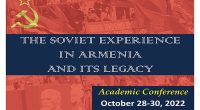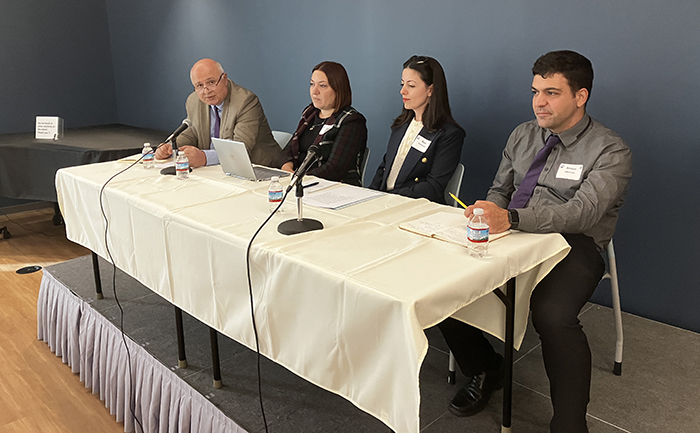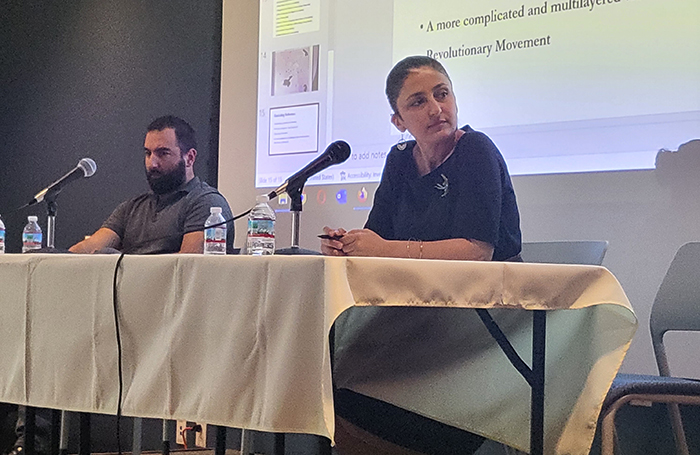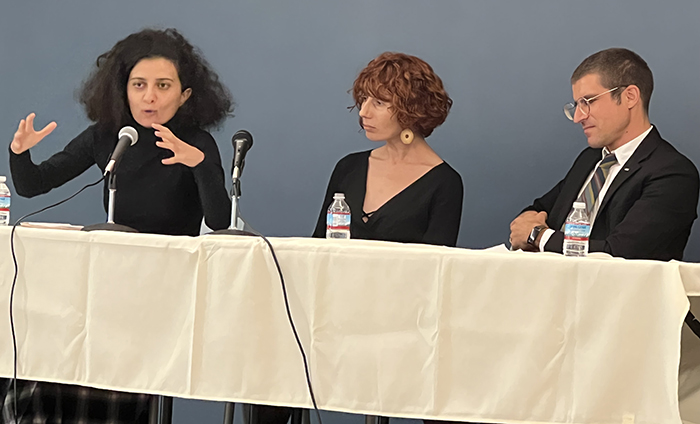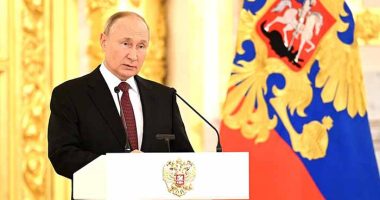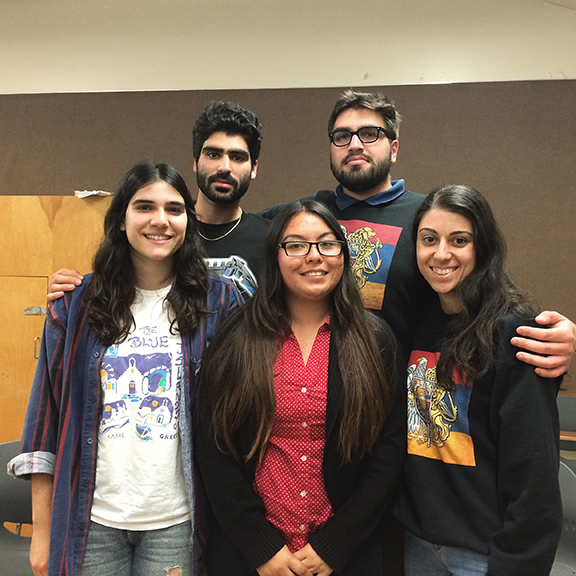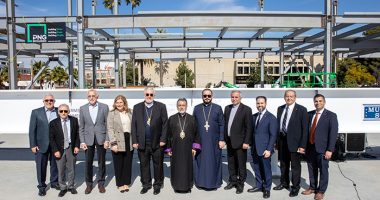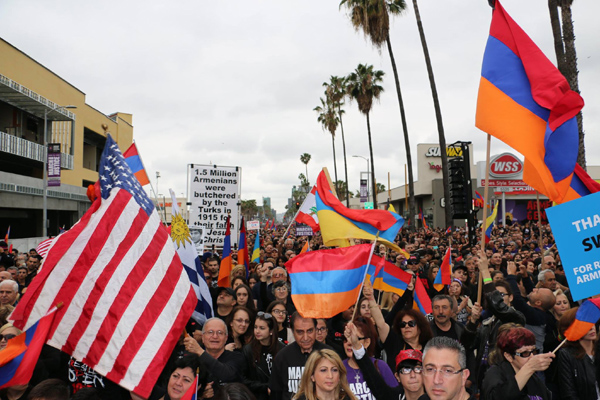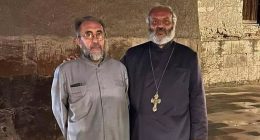BELMONT, MA — On September 17 and 18, 2022, the international conference “Technologies of Communication and Armenian Narrative Practices Through the Centuries” took place at the National Association for Armenian Studies and Research (NAASR) Vartan Gregorian Building in Belmont, MA.
The conference was organized and sponsored by the Society for Armenian Studies (SAS) and NAASR with the co-sponsorship of the University of Southern California Institute of Armenian Studies, the Mashtots Chair in Armenian Studies at Harvard University, the Armenian Studies Program at California State University, Fresno, the Armenian Studies Program at the University of California, Irvine, the Krikor and Clara Zohrab Information Center, and the Center for Armenian Studies at the University of Michigan, Ann Arbor.
The conference featured papers by scholars from Armenia, the United States, Hungary, and Australia, mainly participating in person but with several joining via Zoom.
Opening Remarks by Organizers
Welcoming remarks on September 17 were provided by representatives of SAS and NAASR. SAS President Bedross Der Matossian of the University of Nebraska, Lincoln, thanked all of the conference supporters and co-sponsors and noted the significance of the conference’s being the first one held at NAASR’s new building, which had its grand opening shortly before the onset of the Covid-19 pandemic, and that SAS is “looking forward to more fruitful cooperation with NAASR in the coming years.” NAASR Director of Academic Affairs Marc Mamigonian pointed out that having scholars gathered together in the building to share their work and interact with each other and with the general public is the ultimate fulfillment of what was hoped for when the building was conceptualized.
Dzovinar Derderian of UC Berkeley, who with Christopher Sheklian of Radbound University was one of the framers of the conference theme, gave opening remarks, stating that the idea for the concept went back several years and was “the outcome of Christopher Sheklian and my separate but intersecting interests in the questions of how forms and mediums of narration have shaped various Armenian communities and how Armenians in turn have molded those mediums and genres of communication.”
Session One: Narrative Practices and Power
The first conference session was “Narrative Practices and Power” and included four papers with Marc Mamigonian as chair and discussant. Armen Abkarian (University of Michigan, Ann Arbor), “Forging The Crown of Togarmah: Vahram’s Chronicle and the Creation of Cilician Armenian Kingship,” focused on Vahram’s Chronicle and its strategies of projecting the power and legitimacy of the Cilician Armenian kings, as well as its place in a tradition of Armenian historiography that sought to legitimize this or that ruler but also how the Chronicle draws on non-Armenian forms and styles. Asya Darbinyan (Clark University), “Stories of Refugee Struggle and Assistance through the Periodicals of Imperial Russia,” discussed the coverage of the plight of Armenian refugees in various periodicals published in the Russian empire during WWI, both in Russian and in Armenian, and posed a key question, “What did the central imperial periodicals focus on vs. their Armenian counterparts?”
Harutyun Marutyan (Armenian Genocide Museum-Institute, Institute of Archaeology and Ethnography, National Academy of Sciences of Armenia), “Visual Forms of Communication as a Tool and Sign for Revolutionary Changes,” in his close look at the posters and banners of the Karabakh movement in the late 80s and early 90s, focused a great deal of attention on the issue of legitimacy, in this case how the movement, through its posters, asserted the legitimacy of its cause by invoking a document, the Soviet constitution, and a concept, the will of the people. Hasmik Khalapyan (American University of Armenia), “Narratives of Atheism in Forging a Soviet Armenian Citizen,” provided a detailed look at the history and modes of communication used in Soviet Armenia to promote the communist doctrine of atheism to a nation with a strong Christian church and traditions.
Session Two: Technologies of Communication and Identity Making
On September 18 the conference continued with “Technologies of Communication and Identity Making,” with Zoom presentations by Natasha Parnian (Macquarie University), “A World in Crisis: Reconstructing Identity in Late Antique Armenia,” and Diana Ghazaryan (Pázmány Péter Catholic University), “Through the Lens of History: Photographic Modes of Inhabiting the Holy Land by 19th and 20th Centuries Armenians,” and, in-person, Shushan Khachatryan (Armenian Genocide Museum-Institute), “Sacred Objects as Symbols of the Armenian Genocide Survival Stories.” Nora Lessersohn of University College London was the chair and discussant.
All of the papers addressed forms of communication such as manuscripts, books, photographs, and prayer scrolls that double as devices of mediation; and through their mediation, they serve as objects of identity formation. Parnian discussed the development of the Armenian alphabet—a most fundamental technology of communication—which, in being used to translate Christian literature in particular, forged a visual and intellectual relationship between Armenian-ness, or Armenian identity, and Christianity. Ghazaryan, examined photographs that not only serve to connect or mediate their viewers with the stories they tell, but also situate the Armenian photographers themselves as mediators, in-between figures who could bridge their local community, the “East,” with the communities of the “West.” Khachatryan presented examples of old manuscripts, ritual and prayer books, and hmayils [prayer scrolls] that serve as conversation starters that allow viewers to learn Armenian stories of survival and thus to better understand Armenians as survivors, across multiple generations.
Session Three: Adapting to Change
The next panel, “Adapting to Change: Mobility, Changing Socio-Economic Patterns, and Technologies of Communication,” began with a talk by Jesse Arlen (Zohrab Information Center), “An Old Technology in a New Era: The Use of the Scroll (Hmayil) among Early Modern Armenians,” concerning the hmayil, the extraordinary scroll-shaped medium that emerged in the early modern period, and addressed questions such as “Who produced these scrolls, who were they produced for, and for what purposes?” and “How might the contents of hmayils help explain their function and use among early modern Armenians?” Gayane Ayvazyan (Harvard University), “The ‘Diary’ of Eremia Komurjian: The Writing of Everyday,” offered insight into the life of Eremia and his background, focusing on what his work tells us about the everyday, in productive contrast to previous scholarly work. The third paper was by Anush Sargsyan, and it treated the extraordinary T/O (terrarum orbis) map, which has been studied in depth by Rouben Galichian. Sargsyan took a different approach by seeking to understand the work within the context of its host manuscript, MS 1242 of the Matenadaran. Christina Maranci (Mashtots Chair in Armenian Studies, Harvard University), acted as session chair and discussant.
Session Four: Can the Provinces Speak?
The final panel, “Can the Provinces Speak? Mainstreaming Peripheral Narratives and Perspectives on Ottoman-Armenians,” focused on the theme of how to access the lives of provincial Ottoman Armenians during the late 19th and early 20th centuries. Anna Aleksanyan (Clark University), “Provincial Khmoratip School Press as a Platform for Representation of Women’s Issues,” looked at a relatively unknown source or set of sources that yield a wealth of information about provincial life and specifically women’s issues, marking a significant contribution since the Armenian women’s movement has thus far been examined more through newspapers and books published in Constantinople and other metropoles.
Nora Bairamian (UCLA), “Assessing the Development of Armenian Nationalism in the Ottoman Borderlands Through the Genre of the Short Story,” discussed the differing responses of provincial masses to the emerging or ongoing revolutionary movement around them, drawing on two short stories written by provincial authors, Tlgadintsi of Kharpert in 1911 and Rupen Zartarian, who also was raised in Kharpert and was Tlgadintsi’s student. Varak Ketsemanian (Princeton University), “The Memoirs of Boghos Shadig (1874-1951): Subaltern Voices of the Armenian Revolutionary Movement,” focused on scholarship of the Armenian Revolutionary Federation, both popular and academic, which has tended to concentrate on the leadership of the movement rather than lower-level revolutionaries such as Boghos Shadigian, whose narrative nevertheless expands our understanding of how the nationalist, revolutionary ideology spread among the masses in the provinces. Lerna Ekmekçioglu (McMillan-Stewart Associate Professor of History), acted as the chair and discussant of this final panel.
Concluding Remarks by New Mashtots Chair
Christina Maranci offered closing remarks, observing that “the speakers took us from late antiquity to modern period, from Artsakh to Jerusalem, and from Constantinople to the eastern provinces, they looked at the epic and the everyday, they brought to light modest objects and lesser-known genres, they gave voice to the subaltern, presented regional and microhistories, and told history ‘from below.’” Furthermore, the conference “reflects an important change in the way we approach history, literature, and culture from previous decades, and demonstrates the present and powerful engagement of Armenian Studies with the movements and developments in so many fields.” Conference co-organizer Dzovinar Derderian then led a general


